Marketers And Agencies: Take The “Me” Out Of “Media”
How much time do American consumers spend each day with their multimedia devices, tablets, computers, AM/FM radio, TV, or their smartphones?
In March, Advertiser Perceptions, the gold standard of advertiser and agency sentiment, surveyed 303 marketers and agencies to learn about their personal media habits versus those of average Americans.
The first major finding? Media buyers, planners, and brands perceive little difference between their personal media habits and those of average Americans.
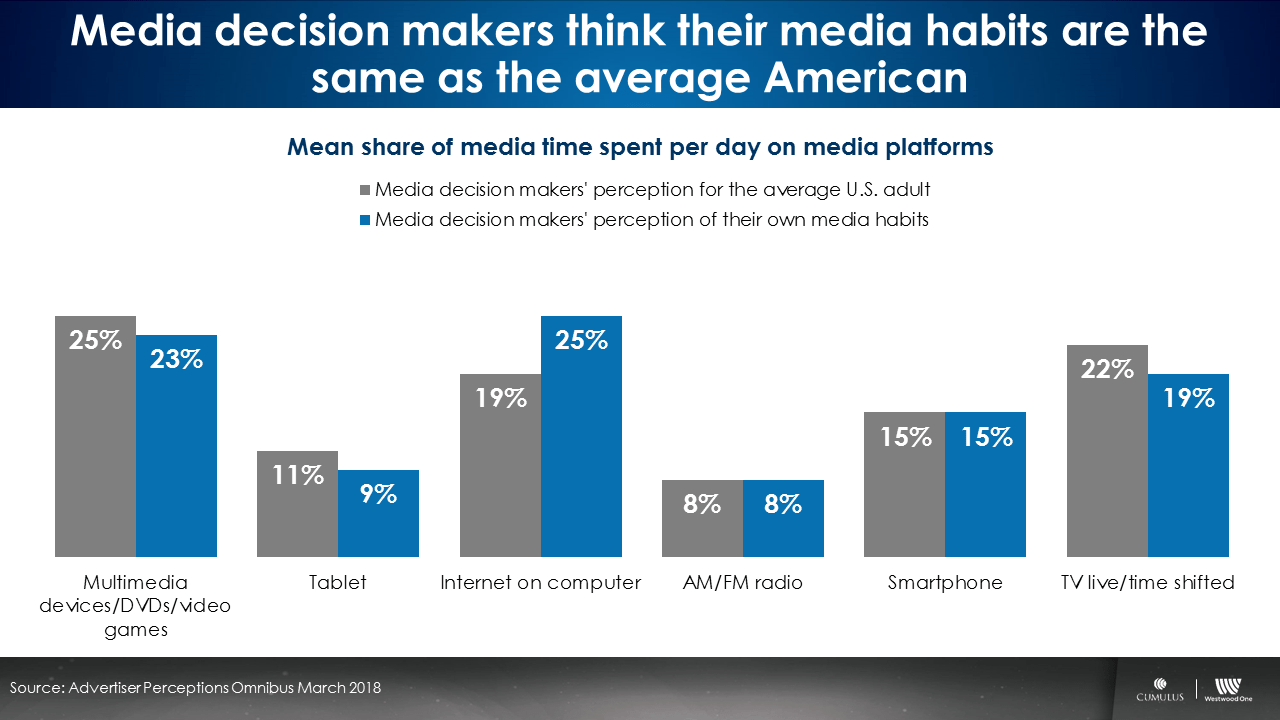
Media decision makers believe their media habits are pretty much the same as everyone else. But how do Americans actually spend their time with media? Do perceptions match reality?
Turning to Nielsen’s Comparable Metrics Report, we can compare actual U.S. time spent with devices and platforms versus perceived media use.
Our second major finding: there is a stunning difference in how Americans actually spend time with devices and media versus how media decision makers perceive how consumers spend their time.
Here are some staggering differences:
- Media decision makers believe Americans spend 25% of their media time with multimedia devices (Apple TV, Roku, etc.), DVDs, and video games. The Nielsen reality? 5%.
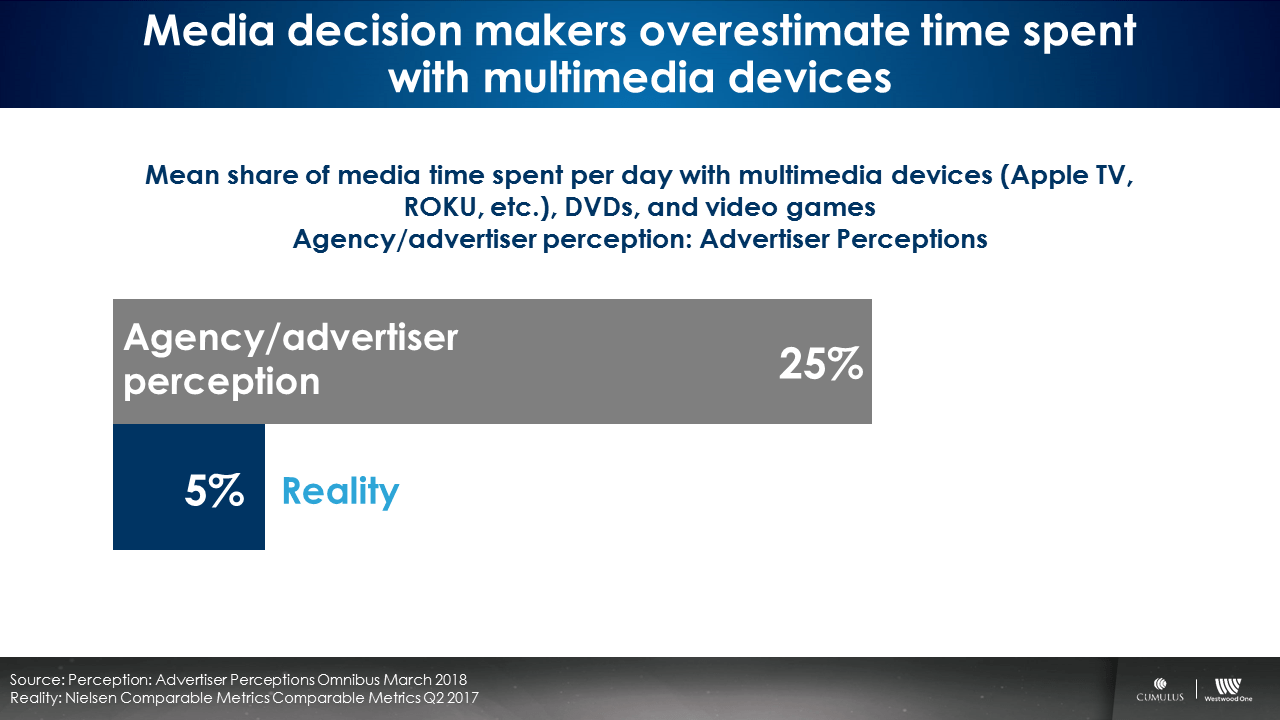
- Conversely, media decision makers think Americans only spend 22% of media time with live or time shifted TV. The Nielsen reality? 36%.
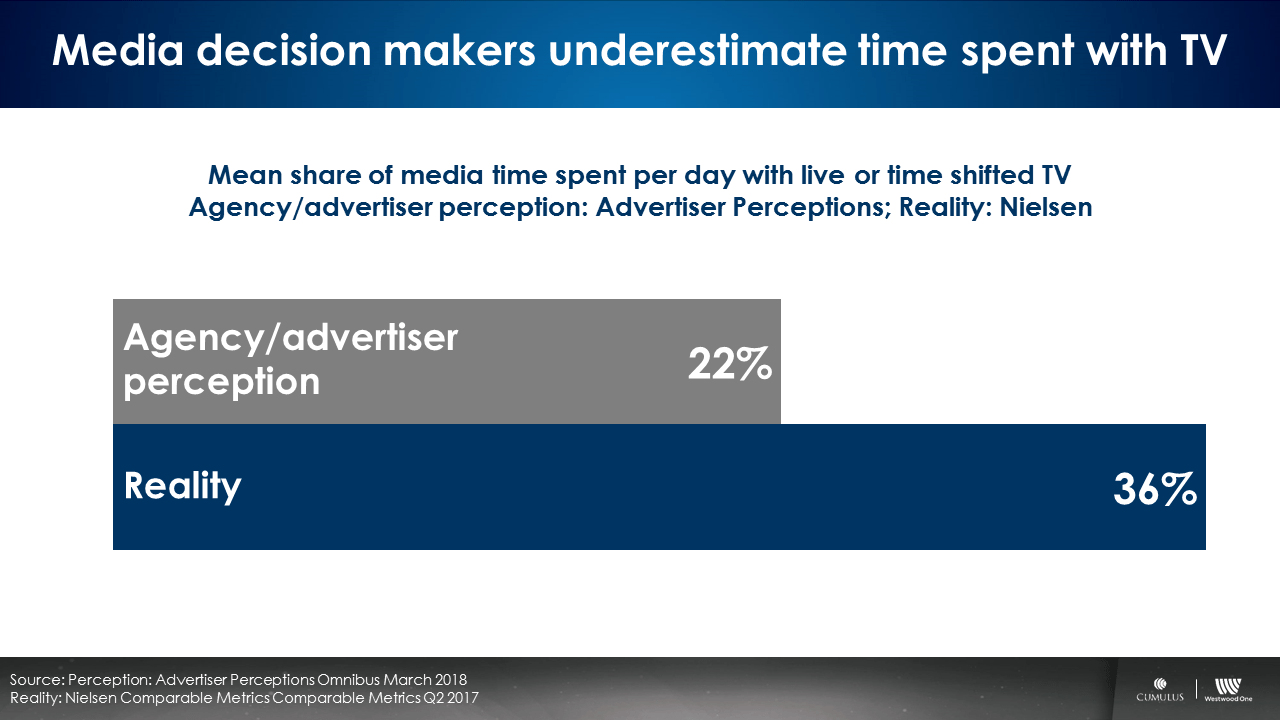
- When it comes to AM/FM radio, media decision makers believe consumers spend 8% of their time with AM/FM radio. Nielsen reality? Nearly double at 15%.
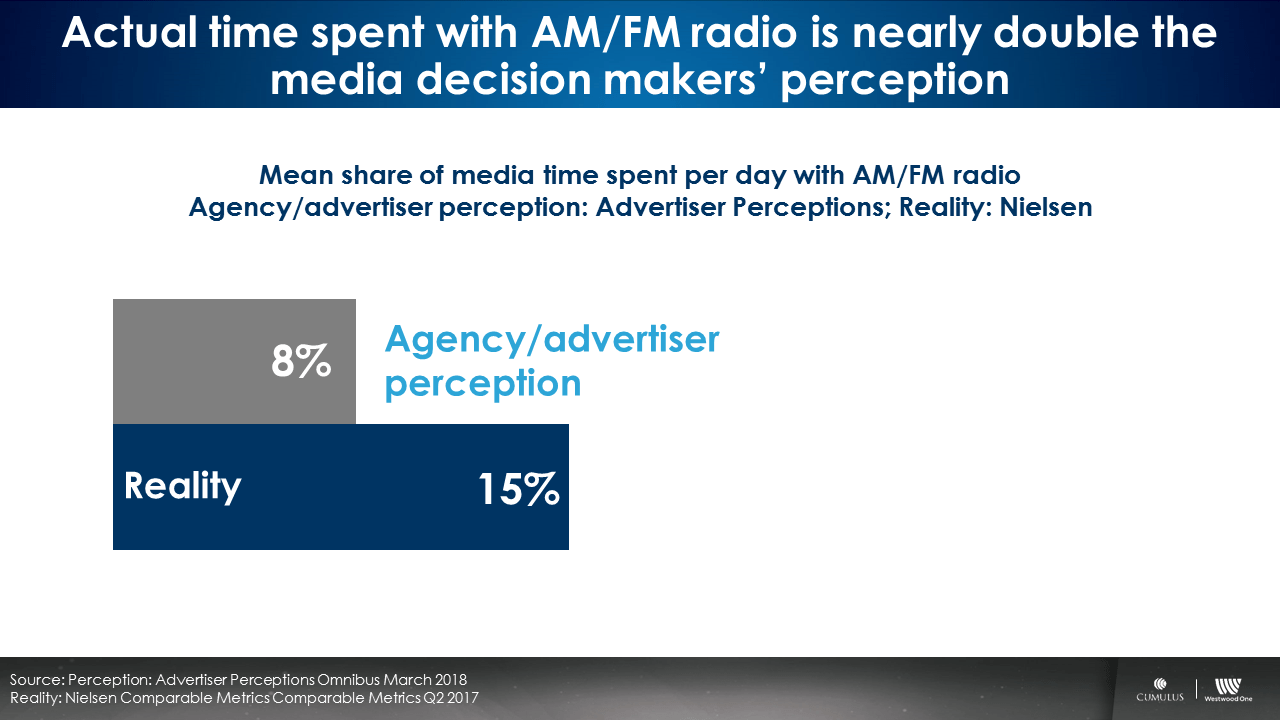
- Oddly, time spent with smartphones is far greater in reality at 27% versus the 15% perception among media decision makers.
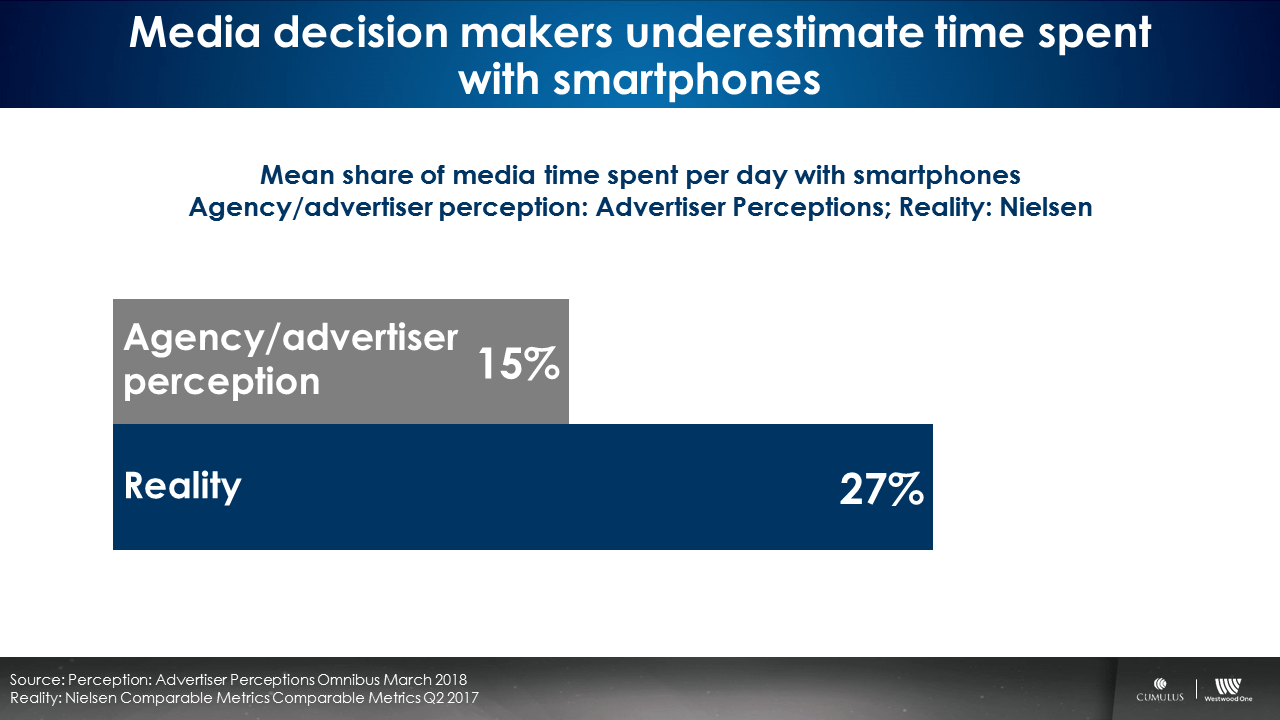
Why is there such a disconnect between media decision makers’ perceptions of consumer media time spent and reality?
Brands often ask their media agencies to peer over the horizon to predict emerging media platforms. Constant time spent examining small consumer trends can exaggerate their perceived size. Media conferences and trade publications tend to focus on new platforms and emerging media. As such, “objects may appear larger than they are.”
In partnership with online market research company Research Now, The Video Advertising Bureau uncovered similar findings in their report “Do We Have Consensus? How the Ad Community’s Media Behaviors Become America’s Norms.” Danielle DeLauro, Executive Vice President at the VAB explains, “Go to any advertising conference today, and you hear about what’s next at the expense of what’s now, so you’d be forgiven for thinking that no one is watching live TV and everyone is on social media all day. The problem with this myopic focus on what’s new and next is that marketers need to sell products today, and that requires a precise understanding of how people are actually using media now.”
Steve Lanzano, CEO of the Television Bureau of Advertising notes, “A Ball State University study found how individuals perceive how they behave and how they actually behave is usually very different.” He observes, “Marketers need to keep in mind that exposure to a media platform does not necessarily translate to ‘importance’ in influencing purchase decisions.”
Marketers suffer from an excessive focus on “what’s new and next.” Legendary media agency CEO Jon Mandel famously quipped, “All my clients suffer from E.M.F. Emerging Media Fever. It’s highly contagious and there’s no cure.”
Colin Kinsella, CEO Havas Media, North America told a conference, “The biggest risk for radio is the 26-year-old planner who lives in New York or Chicago and does not commute by car and does not listen to radio and thus does not think anyone else listens to radio.”
“When you consider how technology is completely changing the way people listen, view and engage with media, it really is no surprise that the buy side underestimates the time that consumers spend with radio,” says Erica Farber, President and CEO of the Radio Advertising Bureau. “The reality, however, is plain and simple – consumers love radio – they listen and they listen a lot.”
Jason Wiese, VP of Strategic Insights at the Video Adverting Bureau concludes, “We’re nowhere near as in sync with American audiences as we think we are, so we all need to take a pause and ensure we fully understand today’s media behaviors.”
Key takeaways:
- Media decision makers think their media habits are the same as the average American.
- Marketers and agencies’ perceptions of American media habits don’t align with reality.
- Actual media time spent with TV and AM/FM radio is much greater than media decision makers perceive.
- To create informed planning decisions, marketers and agencies should take the “me” out of “media” and fully understand today’s media behaviors.
Pierre Bouvard is Chief Insights Officer at Cumulus | Westwood One.
Contact the Insights team at CorpMarketing@westwoodone.com.